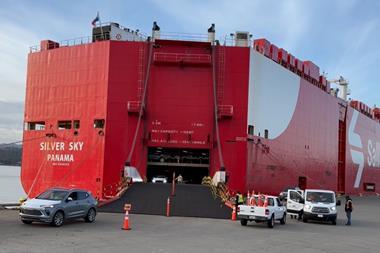
At a meeting convened at the Renault ZE electric vehicle facility in Paris, France on Tuesday, the logistics provider said it is using its network of local distribution centres across Europe to make just-in-time deliveries, like those made to assembly plants, to dealers in urban areas. DHL asserts this can be done within three hours of order placement thanks in part to the proximity of an expanded number of parts distribution centres and would reduce unnecessary stock levels while ensuring that dealers receive the parts more rapidly.
The logistics provider said the service would improve carbon efficiency at the same time by working in conjunction with Renault, which is supplying it with electric delivery vehicles based on the Kangoo model.
The service is already available in a number of European cities including the UK, Portugal, Spain, Germany, Denmark and Sweden, as well as in China and the US. It draws on cross divisional collaboration within the DHL group, including warehousing, waste management and order management functions from DHL Supply Chain, and transport services from DHL Express.
“DHL Supply Chain, which is one of the divisions, will work on the warehouse part of the service, and DHL Express will work on the high speed transport,” said Manoella Wilbaut, global commercial developments director, Automotive Sector, for DHL Customer Solutions and Innovation (CSI). “[The company] is also working with Renault which is providing its expertise because Renault is very advanced with cleaner vehicles.”
DHL Express will have added 20 electric vehicles to its fleet in France by the end of the year and is aiming at converting 30% of its vehicles there to electric cars by 2015. The group has a wider aim of reducing CO2 emissions by 30% by 2020 as part of its GoGreen initiative.
Wilbaut said the importance of quality and speed in automotive aftersales was constantly growing and this had an impact on logistics.
“DHL has found a sustainable solution that cuts costs, reduces CO2 emissions and improves quality and speed of delivery,” she said.
Speed of delivery is based on the growth in the proximity of local distribution centres to dealers in the city, something that can protect quality for the customer according to Fathi Tlatli, president of Global Sector Automotive at DHL CSI.
“In congested cities you obviously have some risks,” he said. “If you don’t have the parts available then customers could go to generic alternatives or even counterfeit parts made by competitors.”
According to DHL, achieving lead times between order and delivery of spare parts of two and a half hours or less means customers don’t often have to make return visits while waiting for a part, improving the customer experience in a number of ways.
“This latest solution increases the service level because of the proximity warehouse there,” he continued. “It reduces inventory at the dealer level, so the dealer can focus on his job, such as test drives and advice on the car, when the logistics part is being met by others.”



































